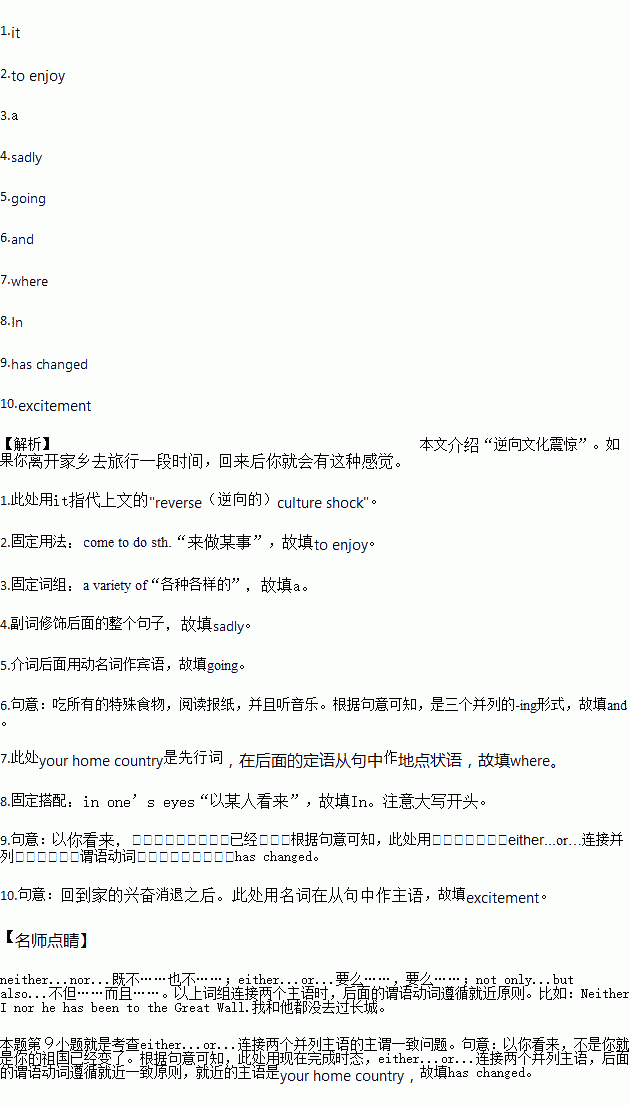题目内容
People who have spent time in other cultures often talk about "reverse(逆向的)culture shock". If you leave your country for more than a short tourist trip and then go back home, you may feel1..What is “reverse culture shock”? Well, imagine the following: You have just adjusted to a new culture and have come2.(enjoy) life in it. You have made new friends and have had3.great variety of new experiences. Then, 4.(sad) enough, it's time to leave, but you are also very excited about5.(go) home. Arriving home is wonderful-seeing all the friends and relatives you haven't seen, eating all the special foods, reading the newspapers6.hearing music you haven't heard in such a long time. But then after a few weeks, perhaps, things may not seem so “wonderful”. You may become critical of your home country7.you have grown up. You may not like certain things or ideas.8.your eyes, either you or your home country9.(change).
This is the process of re-adjustment. It's a difficult period, and many people experience it after the10.(excite) of coming home has worn off. Fortunately, it doesn't usually last as long as adjustment to a new culture does.
 天天向上一本好卷系列答案
天天向上一本好卷系列答案 小学生10分钟应用题系列答案
小学生10分钟应用题系列答案

 proval and public consensus.
proval and public consensus.